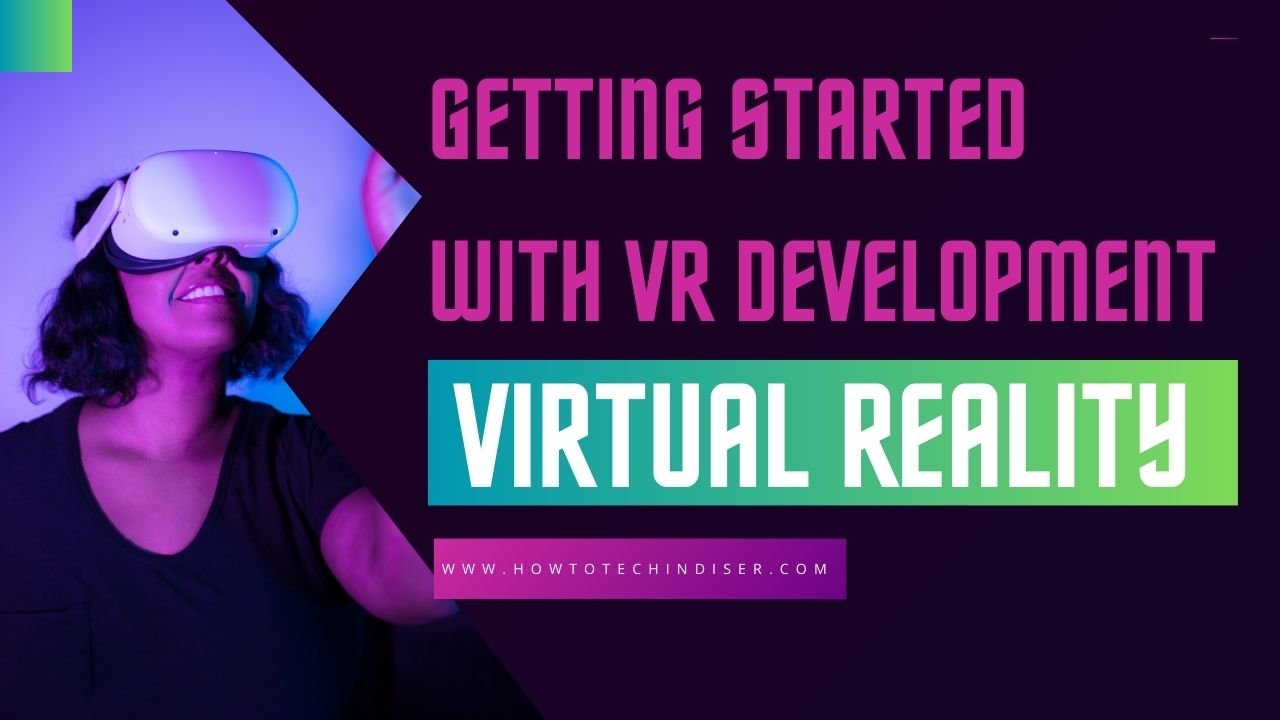Virtual Reality (VR) has rapidly evolved from a futuristic concept to an immersive technology that is changing the way we experience digital content. As interest in VR grows, so does the demand for skilled developers who can create captivating and interactive virtual experiences. If you’re intrigued by the prospect of Getting Started with VR Development, this guide will provide you with a comprehensive overview to get you started on this exciting journey.
Understanding the Basics of VR Development
1. Familiarize Yourself with VR Concepts
Before delving into development, it’s essential to grasp the foundational concepts of VR. Understand the difference between augmented reality (AR) and VR, and explore the various types of VR devices available in the market. Familiarity with terms like headsets, controllers, and positional tracking will set a strong foundation for your VR development journey.
2. Choose a Development Platform
VR development is diverse, with various platforms and engines available. Unity and Unreal Engine are two popular choices, providing robust tools and extensive documentation for VR development. Choose a platform that aligns with your project goals and expertise level.
Getting Started with VR Development
Setting Up Your Development Environment
1. Acquire the Necessary Hardware:
To start developing for VR, you’ll need the appropriate hardware. Invest in a VR headset compatible with your chosen platform. Oculus Rift, HTC Vive, and PlayStation VR are popular choices, each with its unique features. Additionally, ensure your computer meets the hardware requirements for VR development.
2. Install Development Software:
Download and install the development software corresponding to your chosen platform. Unity and Unreal Engine both offer VR development support. Follow the platform-specific instructions for installation, and make sure to keep your development environment updated.
Building Your First VR Experience
1. Create a Simple VR Project
Start small to grasp the fundamentals. Create a basic VR project with simple interactions and navigation. Unity and Unreal Engine provide templates and tutorials to help you create your first VR scene. Experiment with 3D models, textures, and lighting to understand how they contribute to the immersive experience.
2. Learn VR Programming
Understanding the programming aspect is crucial for VR development. Familiarize yourself with languages such as C# (for Unity) or C++ (for Unreal Engine). Learn how to implement VR-specific functionalities, such as hand tracking, object interaction, and teleportation.
Optimizing and Testing Your VR Project
1. Optimize for Performance
VR applications demand high performance to ensure a smooth and immersive experience. Optimize your project by managing resources efficiently, reducing polygon count, and employing level-of-detail techniques. Pay attention to frame rates to prevent motion sickness in users.
2. Test Your VR Experience
Regular testing is essential to identify and fix issues. Test your VR project on different devices to ensure compatibility. Consider gathering feedback from users to enhance the overall quality and user experience.
Conclusion
Embarking on the journey of VR development opens up a world of possibilities for creating immersive and engaging experiences. By understanding the basics, setting up your development environment, building projects, and optimizing for performance, you’ll be well on your way to crafting compelling virtual realities. Stay curious, keep learning, and embrace the exciting challenges that VR development has to offer. Happy coding!
Read More : How to Start Freelancing as a Software Developer
FAQs:
Q1: What programming languages are commonly used in VR development?
A1: The most commonly used languages for VR development are C# for Unity and C++ for Unreal Engine.
Q2: Can I develop VR applications without prior programming experience?
A2: While some platforms offer visual scripting tools, having a basic understanding of programming concepts will significantly benefit your VR development journey.
Q3: Are there free resources for learning VR development?
A3: Yes, both Unity and Unreal Engine provide extensive documentation, tutorials, and community forums for free learning. Additionally, online platforms like Coursera and Udemy offer VR development courses.
Q4: How can I ensure my VR application is comfortable for users?
A4: To ensure user comfort, focus on optimizing performance, maintaining a consistent frame rate, and implementing intuitive controls. Regular user testing and feedback are crucial for refining the user experience.
Q5: Is VR development only for gaming applications?
A5: No, VR development extends beyond gaming. It is utilized in various industries, including healthcare, education, architecture, and training simulations.

